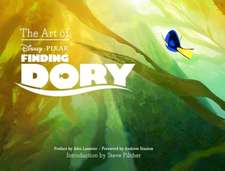Kitano Takeshi: World Directors
Autor Aaron Gerowen Limba Engleză Hardback – 31 iul 2007
Din seria World Directors
-
 Preț: 223.85 lei
Preț: 223.85 lei -
 Preț: 223.67 lei
Preț: 223.67 lei -
 Preț: 223.02 lei
Preț: 223.02 lei -
 Preț: 199.83 lei
Preț: 199.83 lei -
 Preț: 196.89 lei
Preț: 196.89 lei -
 Preț: 223.85 lei
Preț: 223.85 lei - 11%
 Preț: 460.93 lei
Preț: 460.93 lei -
 Preț: 181.72 lei
Preț: 181.72 lei
Preț: 568.22 lei
Preț vechi: 660.72 lei
-14% Nou
Puncte Express: 852
Preț estimativ în valută:
108.76€ • 118.18$ • 91.42£
108.76€ • 118.18$ • 91.42£
Carte tipărită la comandă
Livrare economică 22 aprilie-06 mai
Preluare comenzi: 021 569.72.76
Specificații
ISBN-13: 9781844571659
ISBN-10: 1844571653
Pagini: 272
Dimensiuni: 135 x 190 x 25 mm
Greutate: 0.47 kg
Ediția:2007
Editura: Bloomsbury Publishing
Colecția British Film Institute
Seria World Directors
Locul publicării:London, United Kingdom
ISBN-10: 1844571653
Pagini: 272
Dimensiuni: 135 x 190 x 25 mm
Greutate: 0.47 kg
Ediția:2007
Editura: Bloomsbury Publishing
Colecția British Film Institute
Seria World Directors
Locul publicării:London, United Kingdom
Recenzii
The long-awaited publication of Kitano Takeshi, the first book-length study of the director's complete work, goes quite a ways to answering the question at the head of this review. Aaron Gerow - another man of incontestable credentials thanks to his stints teaching Japanese cinema at the University of Yokohama, Yale and his lengthy tenure as a film critic for the Daily Yomiuri - presents Kitano as an almost schizophrenic personality, made of two distinct personas: the director Takeshi Kitano and the comedian Beat Takeshi. Two personalities that are usually at odds, sometimes at war and occasionally in harmony. Both straight man and buffoon, Kitano forms a one-man manzai act. Gerow posits this duality as the key to analyzing and understanding Kitano's films. The opening chapter, entitled Introducing Two Takeshis, sets the stage, departing from a variety of opinions and attempts by other critics to pierce the mystery. In this chapter and throughout his book, the author makes ample reference to Japanese sources, which opens up a far wider reading of Kitano - one that includes the media personality Beat Takeshi of whom most westerners, including his fans and critics, still have only the slightest inkling, but which forms a crucial factor in understanding the man and his movies. At the same time, this use of Japanese sources also feels like an attempt to lay down new rules for the study of Japanese cinema by foreign critics and writers. A lack of knowledge of the language has meant that the biggest swath of existing discourses on Japanese film, namely that written by the Japanese themselves, is overlooked whenever Western critics talk about Japanese film. In that sense, Gerow's detailed study sets a new standard, particularly when it comes to monographs of contemporary Japanese directors. While it is certainly not true that Japanese critics have a monopoly on the 'truth' about their own filmmakers, incorporating their readings can only lead to more understanding and lower the risk of ethnocentric analysis and exoticism. Or just plain old missing the point. Gerow's study does an admirable job at dissecting the slippery beast known as Takeshi Kitano, and this volume deserves to be seen as a benchmark for any future studies of contemporary Japanese filmmakers. However, the author's consistent reliance on references to other sources in building up his discourse results in his own personality remaining almost as elusive of that of the subject he so deftly dissects.
















